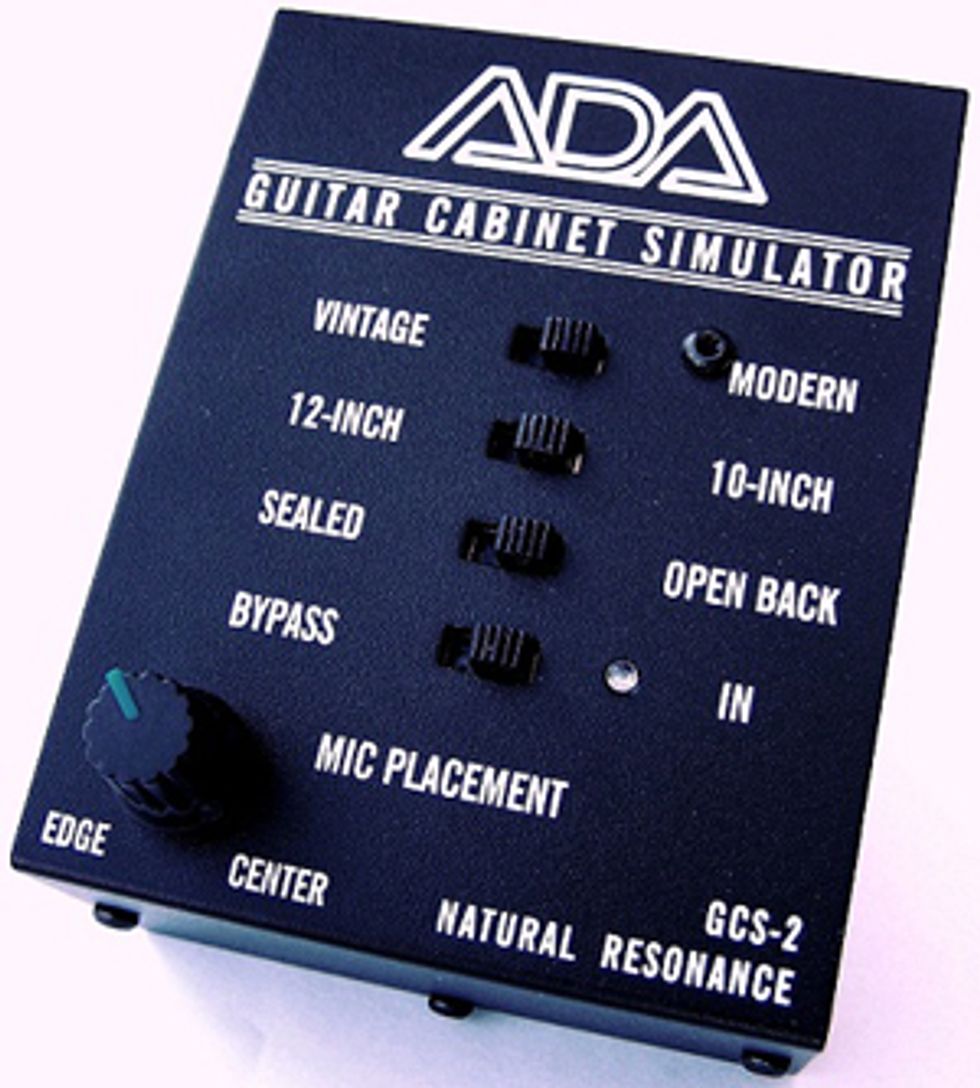ADA Amplification Announces the GCS-2 Guitar Cabinet Simulator and DI Box
Walnut Creek, CA (August 8, 2012) – ADA introduces their new Guitar Cabinet Simulator, the GCS-2. By taking a totally different approach to cabinet simulation, they have developed a

Walnut Creek, CA (August 8, 2012) – ADA introduces their new Guitar Cabinet Simulator, the GCS-2. By taking a totally different approach to cabinet simulation, they have developed a realistic sounding simulator. It captures the fine detail and nuances of sealed and open-back cabinets and the high-level cone break-up distortion of either alnico or ceramic speakers in a way that is indiscernible from the classic SM-57 mic properly placed in front of a cabinet loaded with quality guitar speakers. When paired with the APP-1 Pedal Preamp, the GCS-2 delivers the best tone, dynamics, expression from Clean to Overdrive to Distortion without any setup hassles and crosstalk or need for amps or cabinets. A full-range PA cabinet or floor monitor performs like combos and heads.
Features
• Pure Analog Circuit Design using thru-hole, low-noise components
• Powered by a single industry standard 9-volt AC Adapter, but runs internally at 18 volts for high headroom and lower noise
• ¼” phone jack INPUT with a direct, un-buffered PASS THROUGH ¼” phone jack. This effectively splits the signal to feed both a guitar amplifier and a mixing console
• Balanced Output with switchable LINE or MIC LEVEL Output and GROUND LIFT for Pin 1
• Rugged all-steel chassis
• Manufactured in California
Controls
• Selectable VINTAGE (Jensen alnico) or MODERN (Celestion / Eminence ceramic) Speaker Character
• Selectable 10” or 12” Speaker Size. Effects the bottom response and mid-range coloration.
• Selectable OPEN BACK or SEALED Cabinet Type. This feature sets the GCS-2 apart from other cabinet simulators due to the NATURAL RESONANCE filters at the low-end that resonate or “ring” like a real sealed cabinet or “flap” like older open back cabinets.
• Variable MICROPHONE PLACEMENT Control “positions” the mic to tailor the low and high frequencies of a real speaker in the same way a sound engineer would by moving a microphone near the edge or the center of the speaker. As recording engineers will tell you, the microphone placement is the key to achieving the right tonal spectrum for a given track and can make or break the quality of your solos and chording.
MSRP is $139.96, MAP is $104.95.
For more information:
adaamps.com

